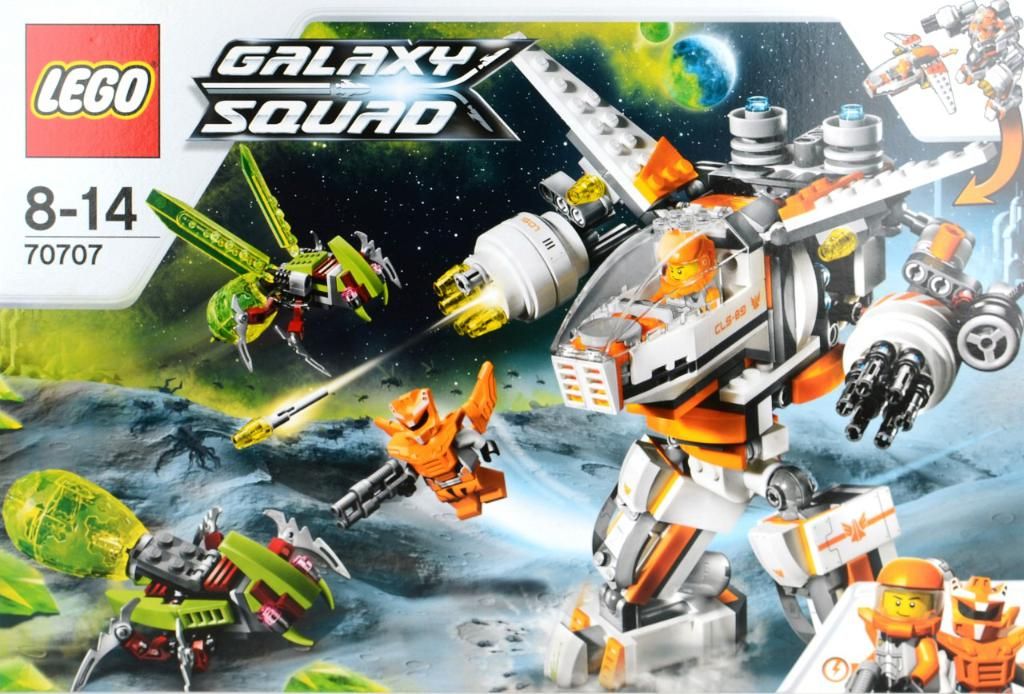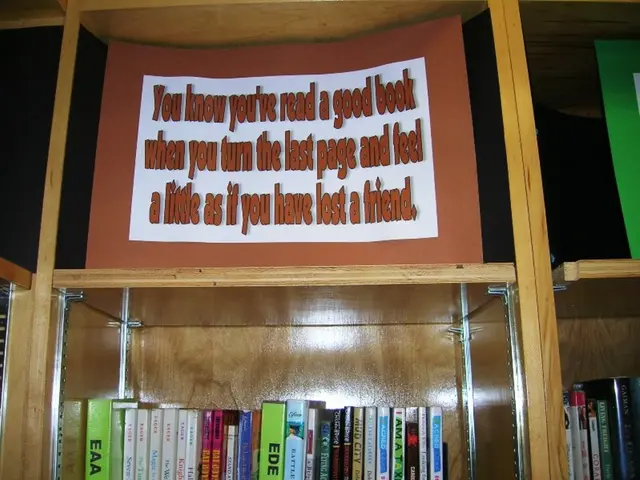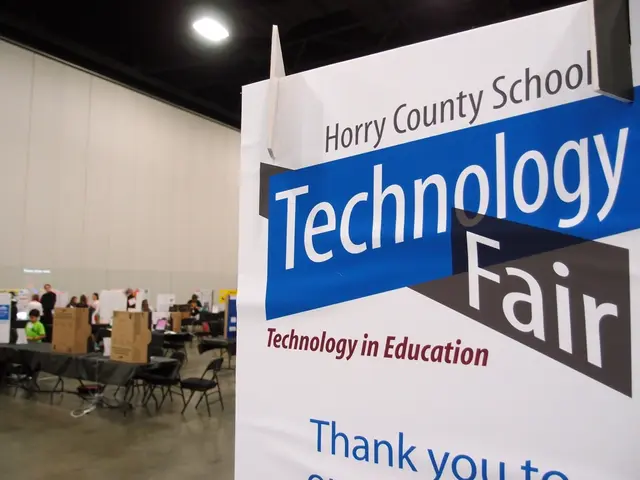Duolingo's AI: The Next Levels in Education
AI in Duolingo: Potential Revolutionizer of Education?
The world of learning is being turned on its head by intelligent, personalized digital education, and Duolingo's AI is leading the charge. By embracing GPT-4 and other advanced AI technologies, Duolingo has moved beyond mere language drills to offer dynamic AI tutors, detailed feedback, and intuitive conversation practice. With these advancements, questions about the future role of teachers, the effectiveness of AI-driven teaching, and Duolingo's standing in the EdTech community come bubbling to the surface.
Key Points to Ponder
- Duolingo's AI tutor uses GPT-4 to deliver real-time language guidance and engaging conversation practice.
- The platform's AI-powered features aim to replicate the strategies of human teachers, providing scaffolding, correction, and encouragement.
- As AI becomes more common, concerns about job disruption and the evolving role of educators in the classroom grow.
- Duolingo ranks among the frontrunners in EdTech for integrating advanced AI technologies for personalized learning.
Also check out: *Moving Away from Human Tutors: Duolingo Turns to AI*
How Duolingo's AI Tutor Performs its Magic
Duolingo's AI tutor, powered by OpenAI's GPT-4, stands at the heart of its premium learning experience. Known as "Roleplay" and "Explain My Answer," these AI-driven tools work as intelligent conversational agents within the app.
Major Features and Workflows
The AI tutor offers a multitude of interactive features that mimic human instruction:
- Roleplay: Engage in realistic conversations with virtual characters tailored to your skill level.
- Explain My Answer: Receive granular, contextualized grammar and vocabulary feedback when you provide an incorrect response.
- Error Correction: Receive instant feedback that mirrors a human tutor by identifying mistakes and offering instructional prompts instead of just answering correctly.
These features utilize a fine-tuned version of GPT-4, fine-tuned using Duolingo-specific language datasets to ensure linguistic accuracy and appropriateness throughout all lessons. Responses are vetted using both automated filters and human reviewers to meet educational standards.
Also see: *AI-driven tutoring systems*
Advanced Features for a Tailored Learning Experience
Duolingo's innovations in generative AI enable adaptive learning. As you progress, the system continues to analyze error patterns, time spent on prompts, and your preferred vocabulary to customize your learning path.
Pedagogical Mimicry
AI features attempt to recreate essential pedagogical techniques:
- Positive reinforcement: Keep motivation intact with praises and encouragement similar to a classroom teacher.
- Scaffolded learning: Adjust lessons dynamically to balance challenge and mastery.
- Immediate feedback: Receive real-time corrections and explanations, a hallmark of effective teaching.
This blend of interactivity and responsiveness creates a high-fidelity simulation of one-on-one instruction, significantly increasing engagement for learners, especially during early proficiency stages.
Also read: *The Impact of Technology on Teaching and Learning*
Duolingo vs Other EdTech AI Options
Duolingo's success story is certainly remarkable, but other EdTech platforms are also incorporating AI to revolutionize learning.
Duolingo stands out due to its exceptional UX design and gamification approach. However, Khan Academy's Khanmigo may offer a deeper level of educational interaction for complex subjects. Coursera's AI tools serve more as productivity aids rather than comprehensive instructional agents.
The Future of Learning with AI: Upgrade or Replace?
As AI advances, a heated discussion ensues. Is it possible or appropriate for AI to replace human teachers? Duolingo's model demonstrates that AI possesses the potential to replicate many tasks previously believed exclusive to trained instructors. However, Duolingo emphasizes that AI serves as a tool to bolster teaching, not replace it entirely.
However, there are ripples: according to data from the OECD, approximately 65 percent of teaching tasks can potentially be augmented by existing AI technologies. This may result in shifts in staffing needs, most likely in one-to-one or low-resource educational environments.
Expert Opinions
"Generative AI tools can offer scalable support where teachers are overburdened, but they cannot replace social and emotional learning," says Dr. Maya Rose, an Education AI researcher at Stanford.
However, some teachers fear that AI's rapid developments could undervalue essential skills, especially in early language acquisition or culturally nuanced communication, where human interaction remains essential.
AI in Education and the Changing Labor Market
According to the U.S. Bureau of Labor Statistics (BLS), teaching positions should see a 4 percent growth from 2022 to 2032. While AI may eliminate some instructional support roles, demand remains high for certified human educators in core and specialized areas.
Although the BLS projects job growth for teachers, jobs specifically relating to AI competency are on the rise. Data from Glassdoor reveals a 72 percent increase in listings for "AI curriculum advisor" or "AI learning integrator" since 2021, reflecting a growing trend toward hybrid human-AI instruction models.
Also see: *AI Fraudster Charged: The Fall of an AI Assistant Kingpin*
Shortcomings and Restrictions of AI Tutors
Despite its prospects, Duolingo's AI still faces challenges:
- Lack of emotional intelligence: AI cannot currently detect signs of frustration or adjust tones in meaningful emotional contexts.
- Bias concerns: AI language generation may perpetuate stereotypes if left unchecked.
- Overreliance: Frequent interaction with a non-human interface may hinder the development of social engagement skills essential for language fluency.
Mitigating these risks entails combining AI tools with human direction rather than letting them operate independently.
Also read: *Streamlining Workflows: How GPT-4 and Python are Automating Repetitive Tasks and Boosting Productivity*
The Final Call: Is Duolingo's AI the Future of Teaching?
Duolingo's AI demonstrates the transformative potential of generative technologies in education. Combinations of personalization, interactivity, and scalability situate tools like GPT-4 as valuable supplements to traditional learning, not replacements for teachers.
As the education landscape keeps evolving, the question will not be whether AI teaches students but rather how schools and platforms balance the human-AI partnership to ensure learning remains accessible, equitable, and effective for all.
- The advancements in Duolingo's AI technology, such as GPT-4, are revolutionizing education and learning by providing dynamic AI tutors, detailed feedback, and intuitive conversation practice, surpassing traditional language drills.
- As AI becomes more prevalent, concerns about its impact on the role of teachers, the effectiveness of AI-driven teaching, and the integration of AI technologies for personalized learning in education and self-development are all under discussion.






